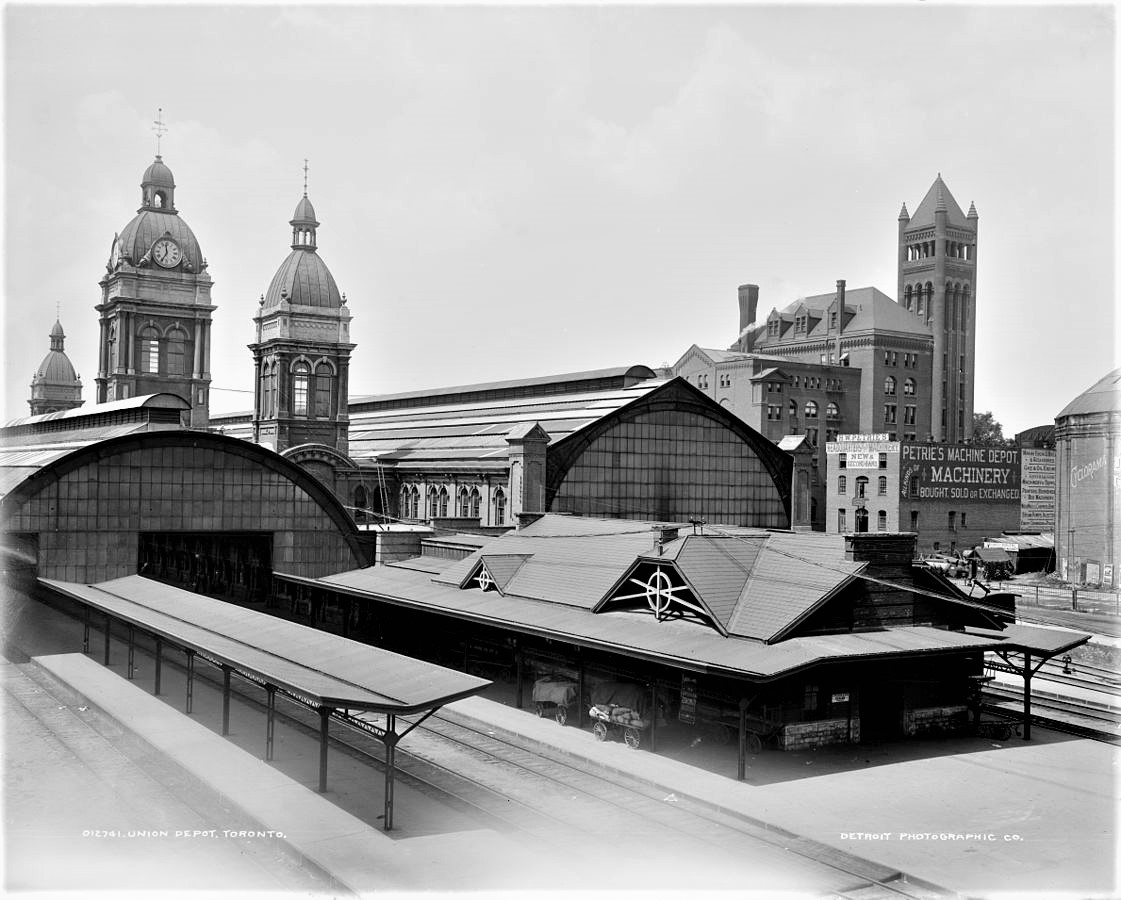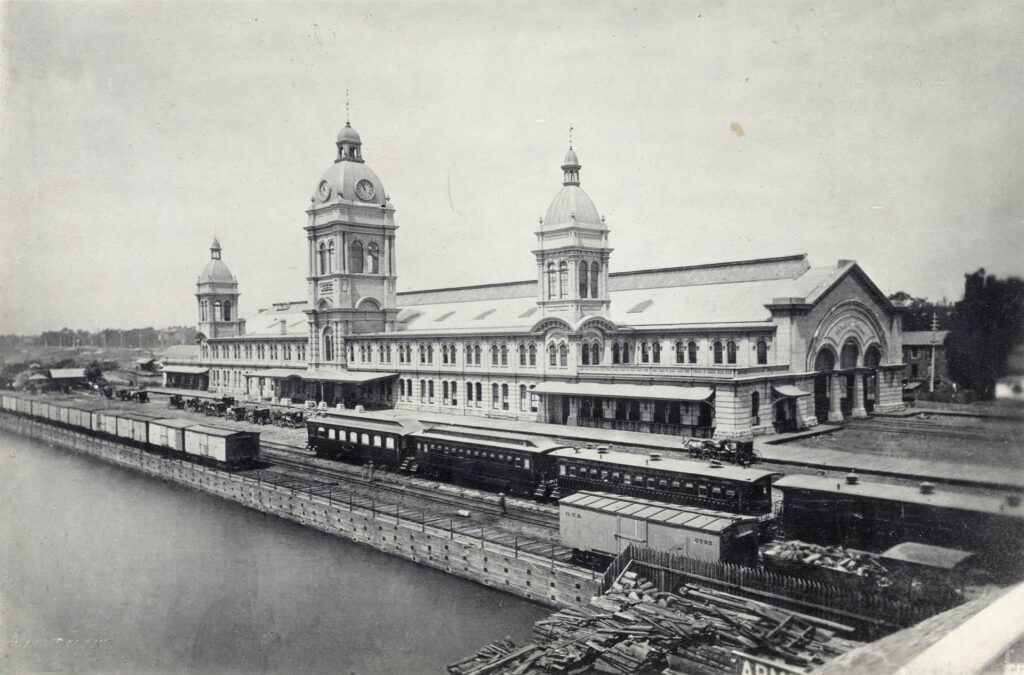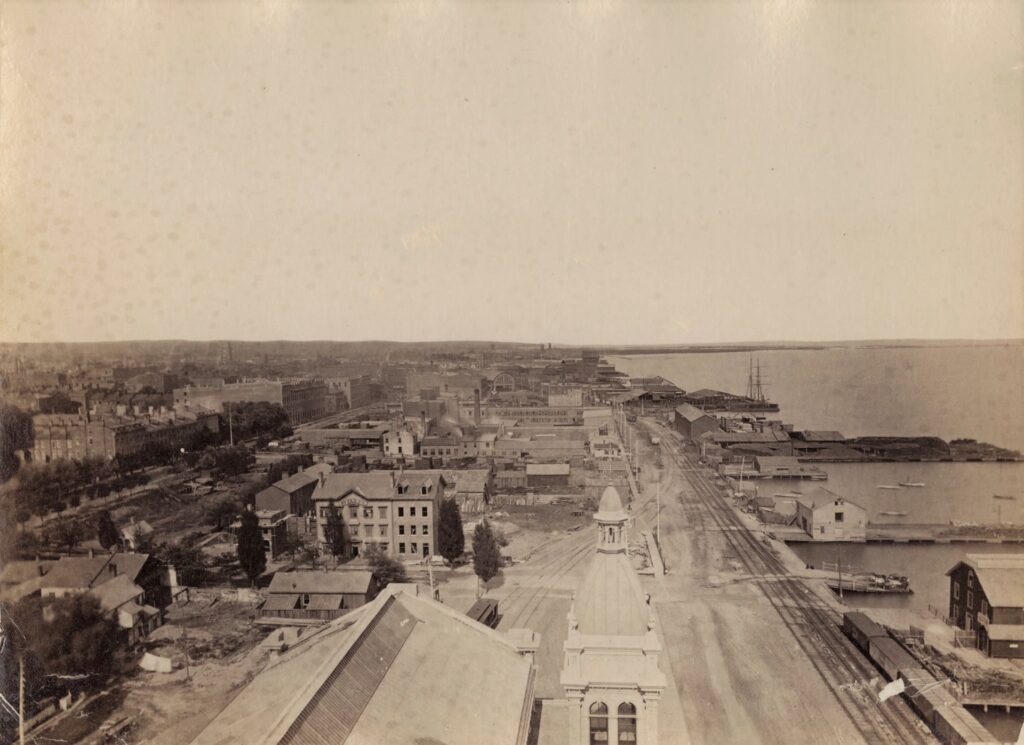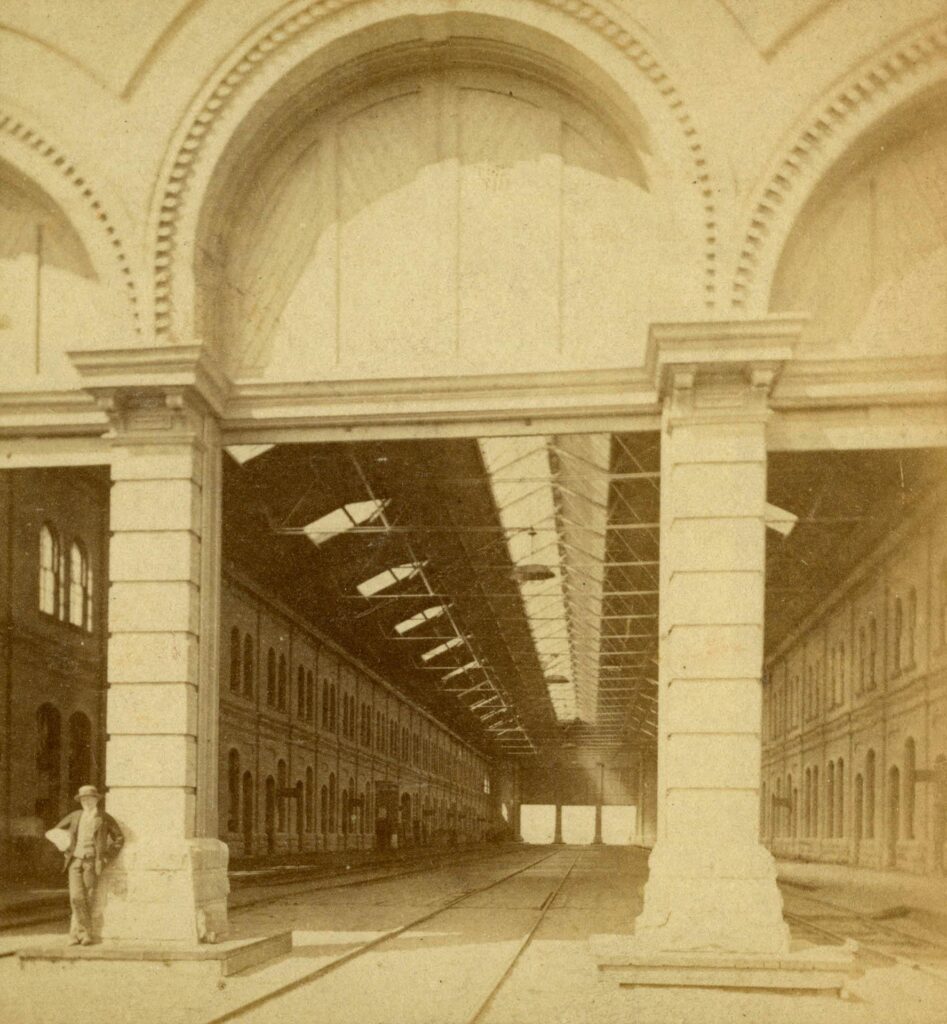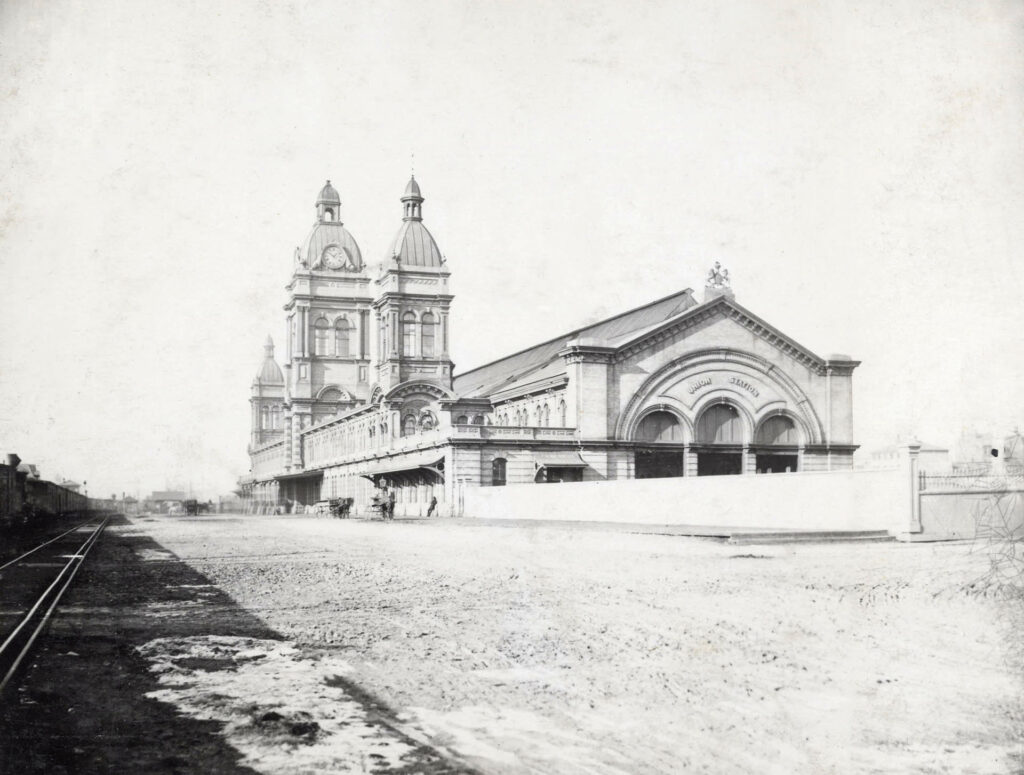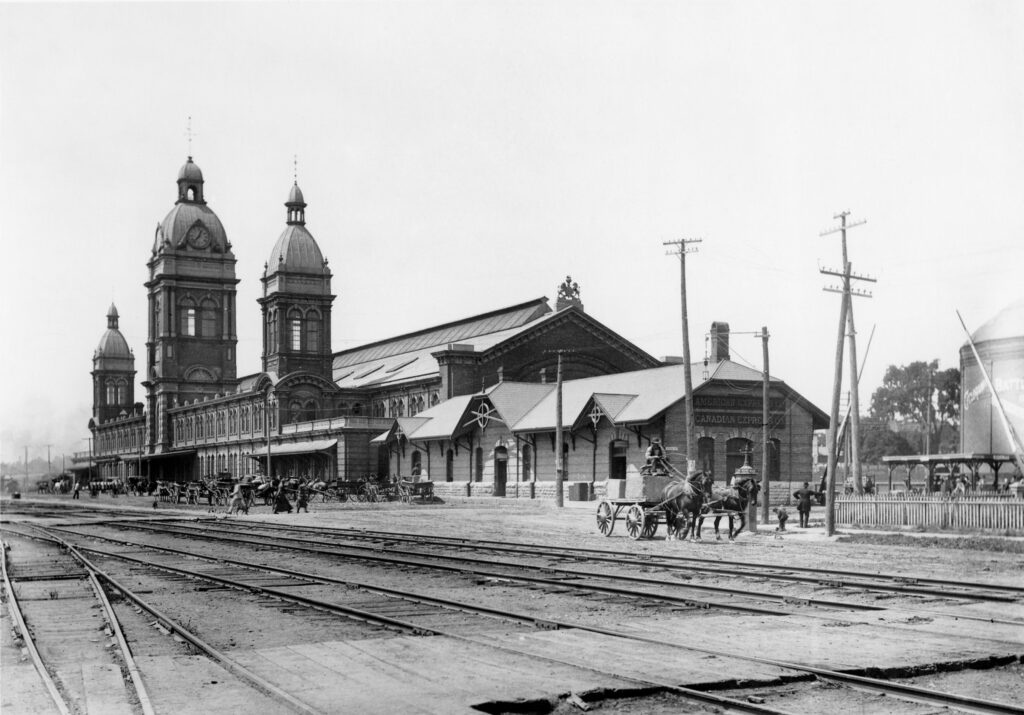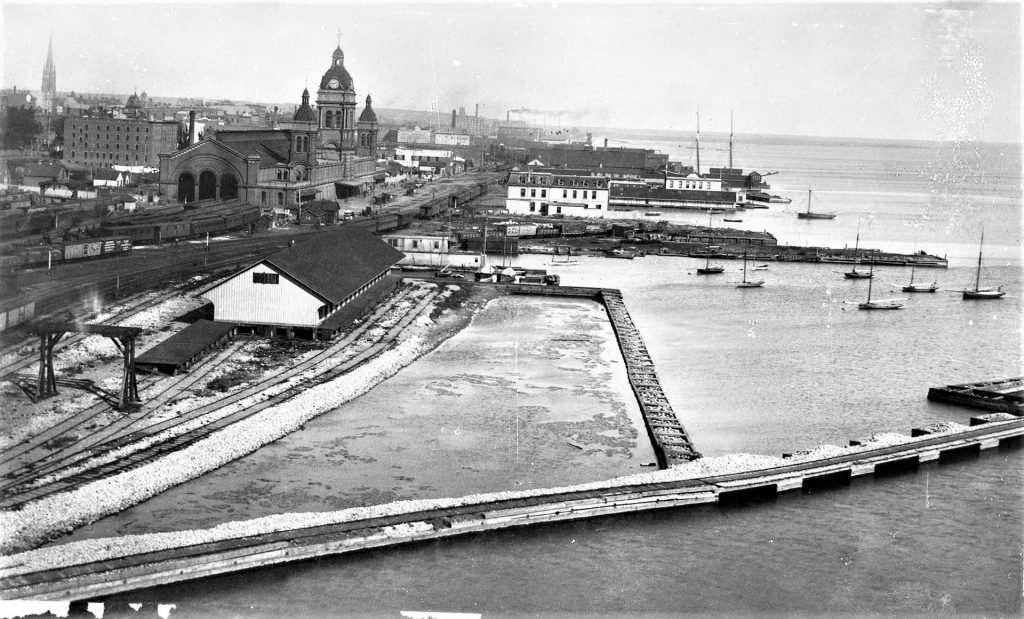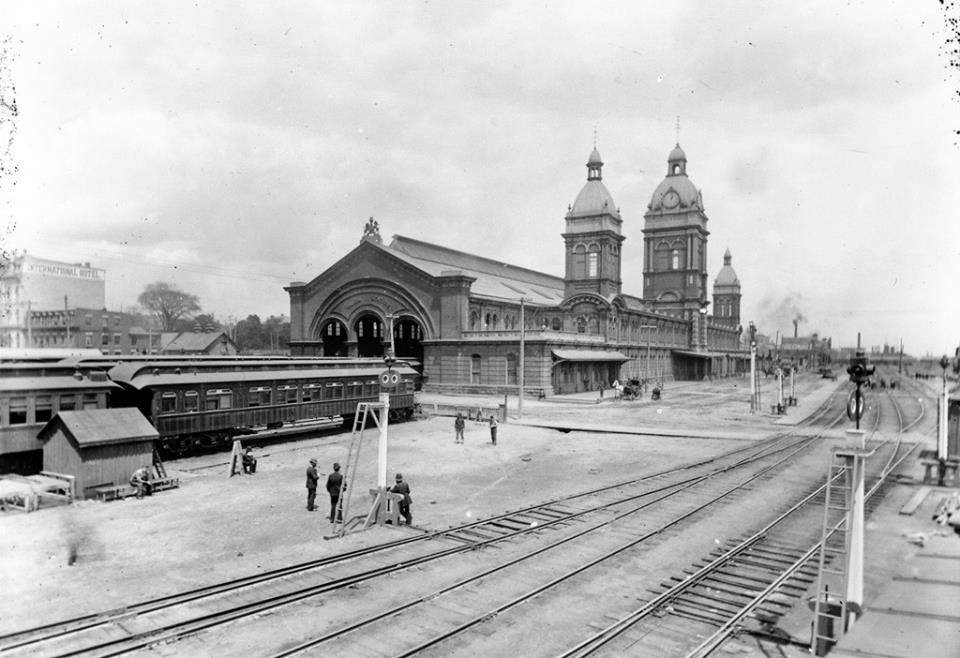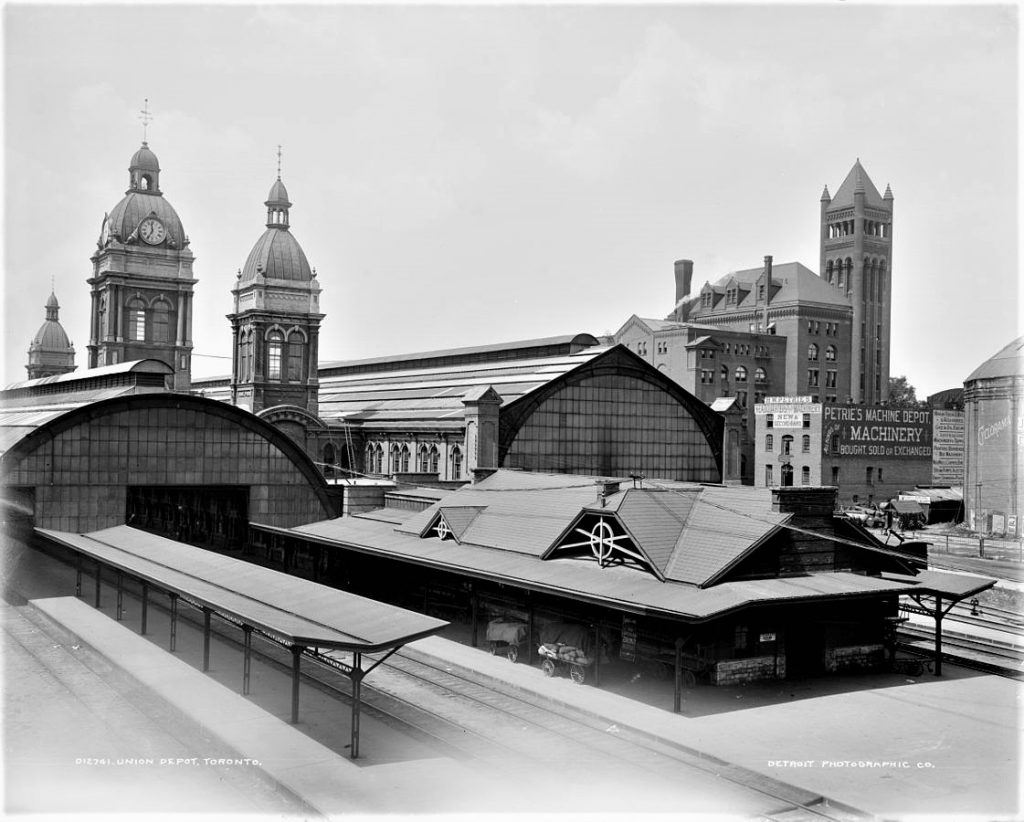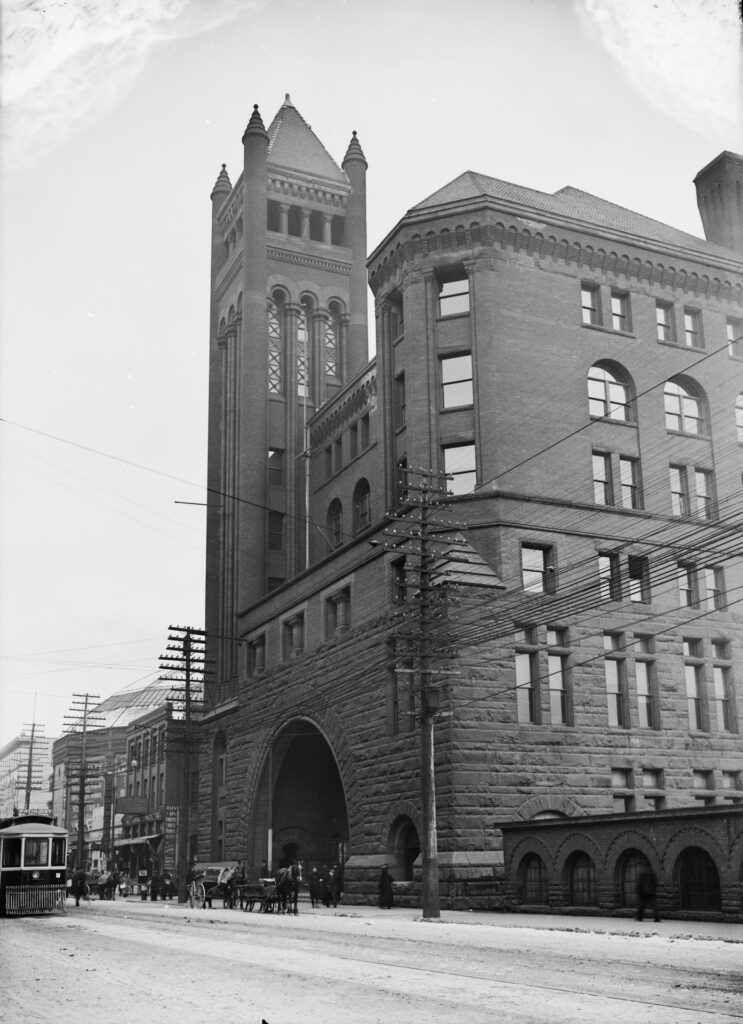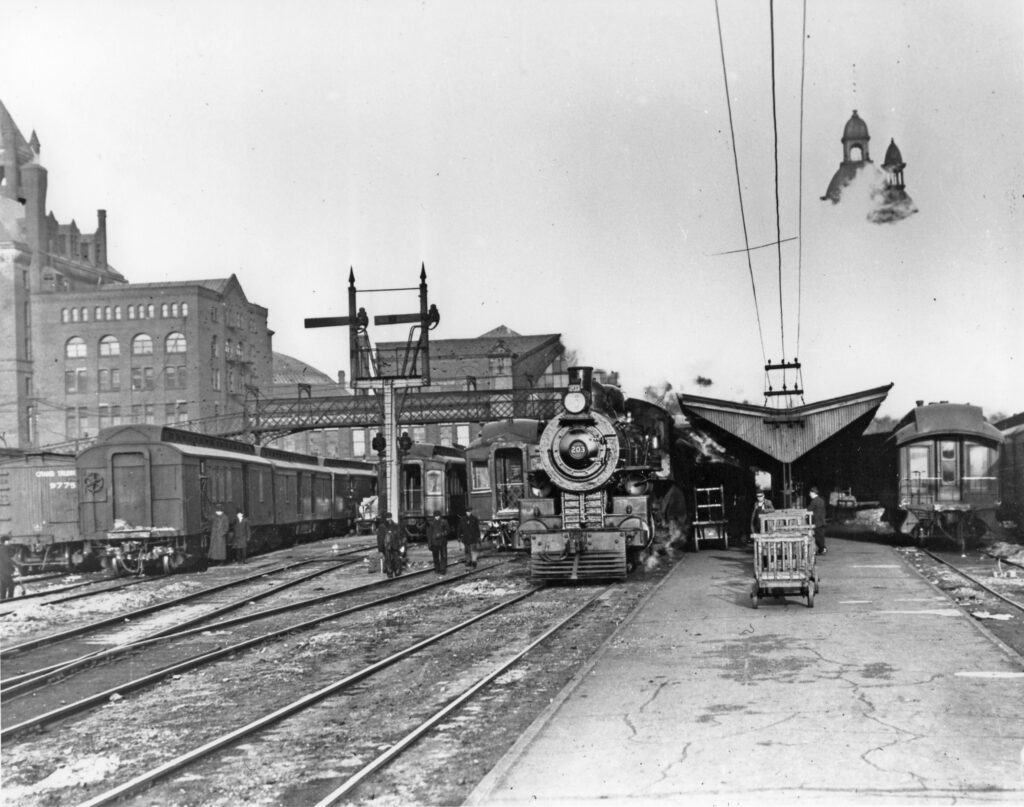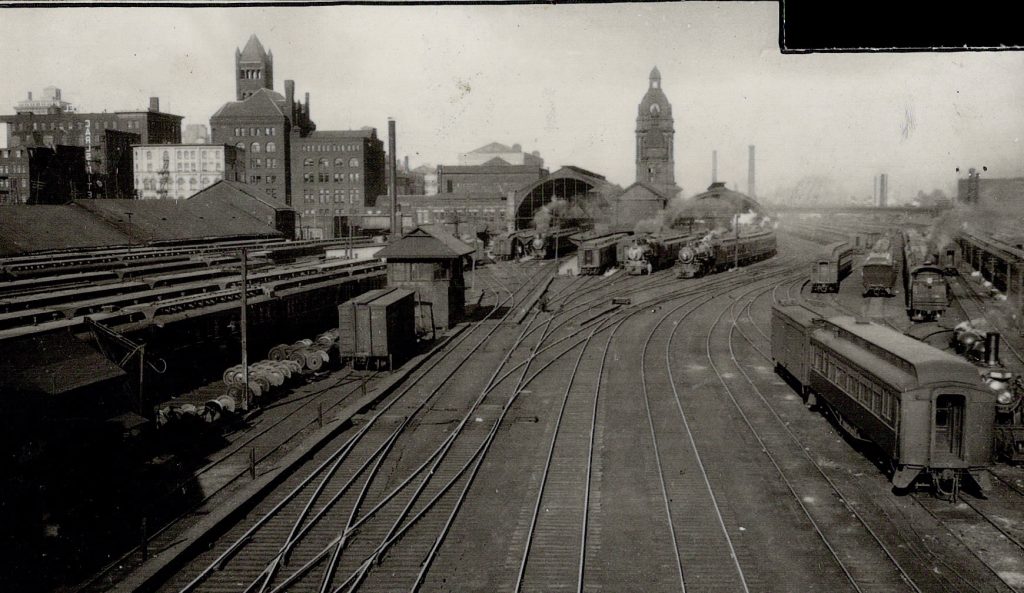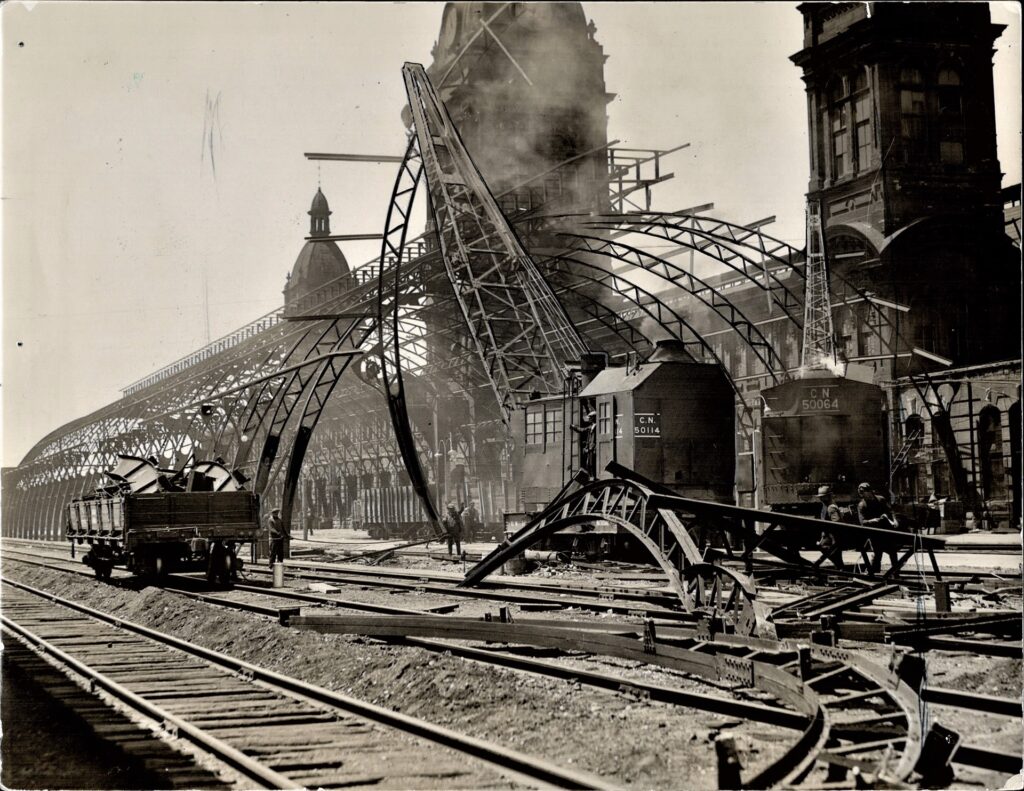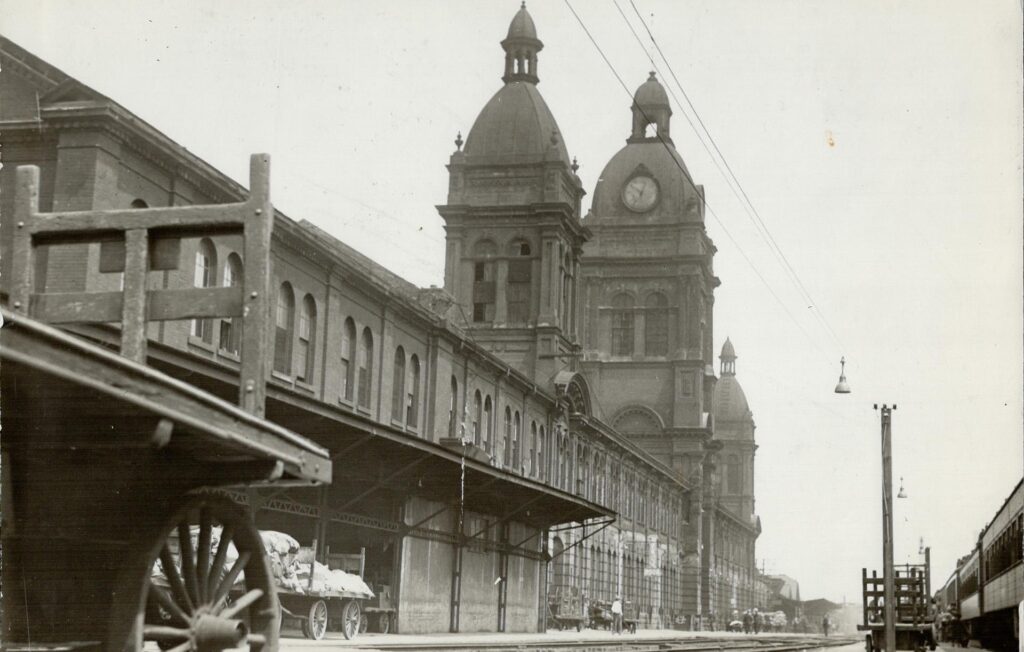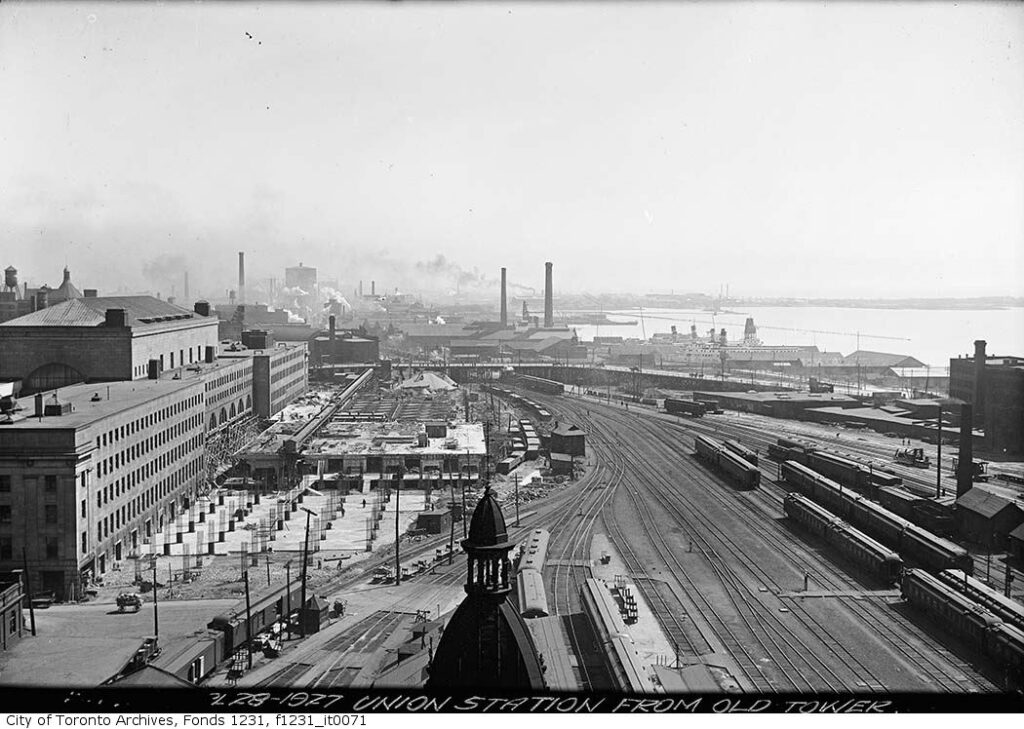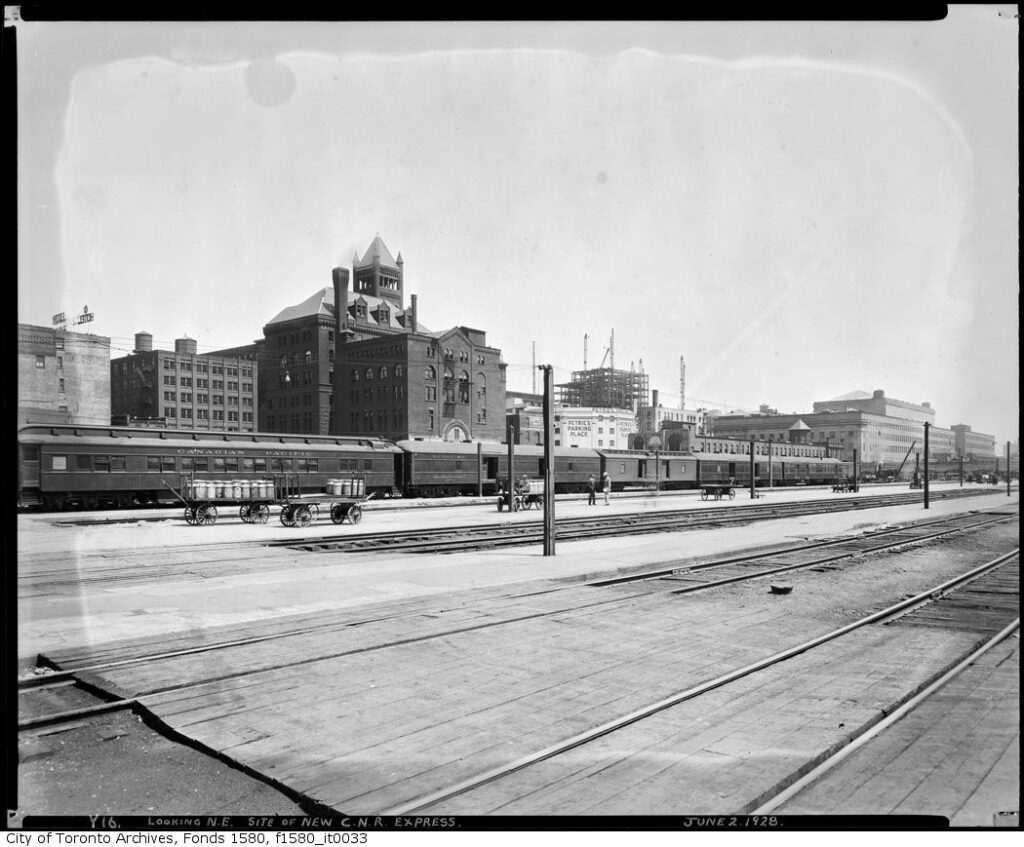Shortly after the closure and demolition of Toronto’s first Union Station in 1871, the Grand Trunk Railway set to work on a much larger structure in the same location to stave off the overcrowding issues encountered by its predecessor. A temporary station was built in the meantime while the new terminal was under construction. The new headhouse incorporated Italianate and Second Empire influences in its architecture, including the trio of towers that were built along the south facing wall. The central tower was taller than the other two, measuring 100 feet in height and having clock faces on all sides of its mansard roof. A total of three tracks entered the station from each end. Above the arched portals of the trainshed, the words “Union Station” were embossed in the exterior wall. Early plans included an “excursion platform” at the north end of the building, but it was never realized. The cornerstone was laid in June 1872 and the station opened to passengers on July 1st, 1873; the largest and grandest passenger rail terminal in Canada at the time of its completion. Upon its opening the Grand Trunk shared this station with the Toronto & Nipissing Railway and the Toronto, Grey & Bruce Railway, and all three of them used it as their primary passenger terminal in the city. The Great Western Railway and Northern Railway of Canada had trains stop on the tracks adjacent to Union Station as well, but this was only for passenger convenience as they both had their own passenger terminals elsewhere in the city.
The importance of boat travel on Lake Ontario influenced the design of the station significantly, so much so that its main entrance was originally oriented to face the water rather than the city. There was an entrance at the north side of the building but it was much less architecturally impressive. In just a decade of operation, the new Union Station quickly became overwhelmed with the volume of trains and passengers it served. After much resistance from the Grand Trunk, the Credit Valley Railway was granted the ability to use Union Station starting May 17th, 1880. Two years later in 1882, the Grand Trunk gained control of the Great Western Railway and subsequently shifted some of its passenger trains over to Union Station. Through its proxy the Ontario & Quebec Railway, the Canadian Pacific Railway gained control of both the Credit Valley and Toronto, Grey & Bruce in 1883, gaining access to Union Station in the process. Union Station saw a staggering 60 trains per day by 1884, all utilizing the same three-track trainshed which had been in use since the station’s 1873 opening. That year the Grand Trunk acquired the Midland Railway of Canada, followed by the Northern Railway of Canada in 1888. The Grand Trunk acquired multiple passenger terminals in the city through this series of mergers and acquisitions, and some had to be kept open to ease the strain Union Station in the meantime.
The Grand Trunk and Canadian Pacific, who were the only tenants of Union Station by this point, agreed to jointly undertake a significant upgrade of the station in 1892. These changes would include a new trainshed along the south side of the station with three additional tracks, and a seven-storey Romanesque office building and grand entrance on Front Street. Perhaps most importantly, the rail corridor was equipped with new safety mechanisms which included our interlocking tower, Cabin D. Since significant portions of the Union Station corridor were arranged many years earlier by companies that no longer existed, the arrangement and positioning of the tracks had to be thoroughly rationalized and adjusted to optimize the efficiency of train movements. All westbound trains would now use Union Station’s new south trainshed, while eastbound trains used the original trainshed to the north. The renovated Union Station officially opened on May 11th, 1896, though the platforms continued to be used by the public while the work was underway.
Even with these efforts to improve the efficiency of Union Station, its design was fundamentally flawed and this became abundantly clear as the station was almost immediately deemed inadequate. An 1899 issue of Railway and Shipping World stated that “…the general consensus of opinion is that the Toronto Union is one of the most inconvenient stations in [North] America, expensive to run and unsatisfactory in very many other respects”. The Great Fire of 1904 opened up a large plot of real estate to the immediate east of Union Station, and the Grand Trunk soon made attempts to secure this land for a new passenger terminal. It wouldn’t come soon enough as the Canadian Northern Railway commenced their passenger service into Union Station on November 19th, 1906, further exacerbating the overcrowding issues. These issues reached their apotheosis with the onset of World War One, as the vast number of soldiers now departing for training camps required other stations and even freight terminals around the city to be used for this purpose instead. Work on the new Union Station would only commence in 1914 and its progress would be mired by the war effort’s effects on materials and the labour force. After the war, both the Grand Trunk and Canadian Northern were nationalized and merged into the newly-formed Canadian National Railways, who would continue to serve old Union Station for several more years. As Toronto’s third Union Station neared completion during the late 1920’s its predecessor was gradually dismantled. The last trains departed old Union Station in 1927, after which the south trainshed was subsequently torn down. While the headhouse and remaining trainshed were also torn down between 1927 and 1928, the clock from the central tower was saved and donated to Huntsville where it was repurposed on their city hall. The last surviving piece of old Union Station, the office and entrance on Front Street, finally met the wrecking ball in 1934.
Condensed Station Info:
| Location: | Served By: | Current State: | Date Built: | Date Demolished: |
| Front Street at Simcoe Street | Grand Trunk (1873 – 1923) Great Western (1873 – 1882) Toronto & Nipissing (1873 – 1882) Toronto, Grey & Bruce (1873 – 1883) Midland Railway (1882 – 1884) Northern Railway (1873 – 1879) Northern & North-Western (1879 – 1888) Canadian Pacific (1883 – 1927) Canadian Northern (1906 – 1919 Canadian National (1919 – 1927) | Demolished | 1873 | ~1927-1934 |


